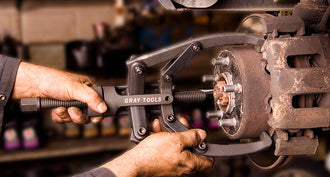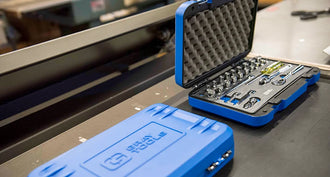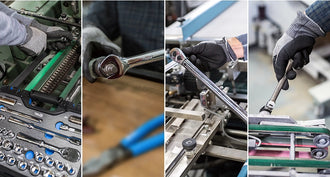Tips for Working with Arthritis
- Gray Tools Official Blog
- 11 Aug, 2016
A job in construction and engineering, as well as any other field in the mechanical or industrial sector, is very rewarding. However, these jobs can be physically demanding and therefore require extensive safety measures.
Those who suffer from arthritis can often fear the future of their employment physical job. They may worry about the possibility of being fired or laid off because of their condition, or about their ability to keep the pace with colleagues. As well, some may leave their job in order to pursue less physically demanding employment.
Arthritis is a chronic pain disorder that causes inflammation in the joints and most often affects the knees, fingers and hips. The most common types of arthritis include osteoarthritis and rheumatoid arthritis.
Arthritis can result from age or injury, however repetitive motions, bending, kneeling, reaching and working with vibrating tools will worsen the situation. As well, standing for long periods of time and lifting heavy objects can cause more frequent flare-ups.
While it’s important to speak with your doctor or occupational therapist about the right solutions for you, here are some tips to ensure you can continue to effectively do your job:
Change Your Technique
Depending on the nature of your job, you could be faced with a variety of tasks that cause stress on one or more areas of your body. Understanding which movements are more greatly affecting your joint pain will help you to better pinpoint alternatives that work for you.
An occupational therapist can assess your job duties and offer suggestions for how to alleviate the pain.
Changing the technique in which you do certain aspects of your job will reduce the stress placed on certain joints.
Take Regular Breaks
If your current break schedule is leaving you feeling tired and sore, you might consider speaking with your employer about a new break plan that works best for you.
Increasing productivity is in the interest of you and your employer, and taking more frequent breaks throughout the day will give your joints the relief they need so you can get back to work faster.
Most importantly, you should take a break when you’re experiencing a flare-up so as to not worsen the situation.
Lastly, taking time to stretch and drinking lots of water will help to mitigate arthritis pain.
Adjust Your Current Tools
There are many ergonomic tools on the market to help reduce arthritis pain, however you might want to first consider how you can adjust existing tools.
An occupational therapist can pinpoint which tools require modifications, such as increased handle size which will allow you to better grip your tools. Adjusting your current equipment to suit your needs is an easy first step in alleviating arthritis pain at work.
Buy New Tools
If you’ve adjusted all your current tools and are still in need of more options, you should look into expanding your collection. There are many tools on the market specifically designed for those with arthritis. Whether you’re looking for something to relieve pain in your hands, back, shoulders or knees, the below products are sure to help:
Extendable tools: if you are constantly bending and reaching for your job, you might want to consider buying an extendable tool with a claw, or a magnetic pick up tool, to help you better grab objects, large or small.
Carrying tools: if you often carry heavy bags, you might want to purchase a tool that you can hang heavy bags on to reduce the load on your joints. You can also purchase a carrier with wheels so you can more easily transport equipment.
Padded or large handled tools: buying tools with large or padded handles will help you to achieve a better grip.
Anti-vibration gloves: if you often use drills, these gloves will reduce the absorption of vibration on your joints, reducing your risk for flare-ups.
Sit-stand stool: if your job requires you to stand for long periods of time, affecting your back and causing pain, a sit stand stool will allow you to remain partially standing while taking the pressure off your joints.
All of these tools are sure to boost your productivity on the job and reduce the risk of worsening your arthritis.
Prioritize Your Tasks
Breaking up your tasks throughout the week will ensure your joints have a sufficient break in between more physically demanding tasks so that you can more easily manage your workload.
Managing your arthritis pain will ensure you can get back to work and keep the pace with your colleagues. Changing your technique, taking regular breaks, adjusting your tools or buying modifiers intended for those with arthritis are all tips to help you keep working.



